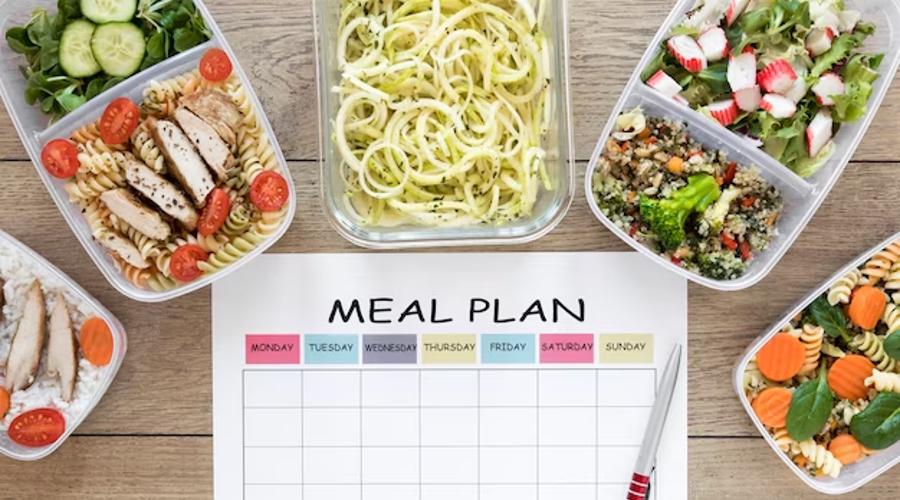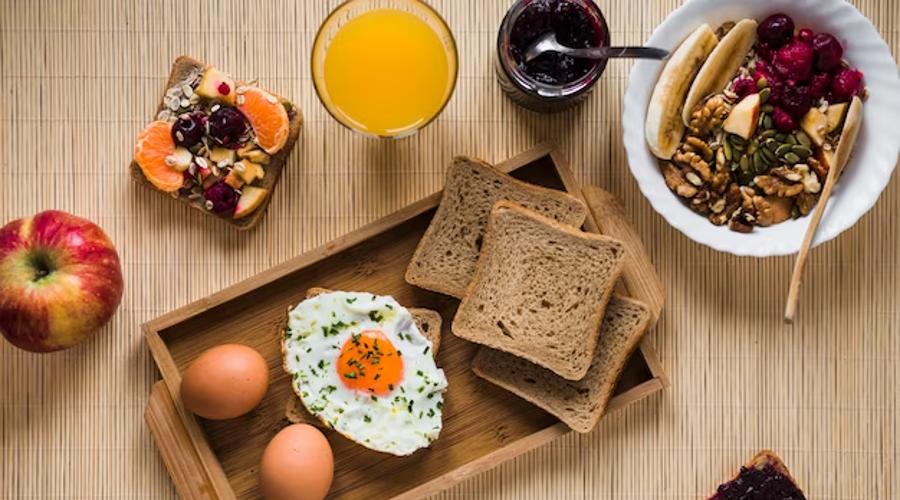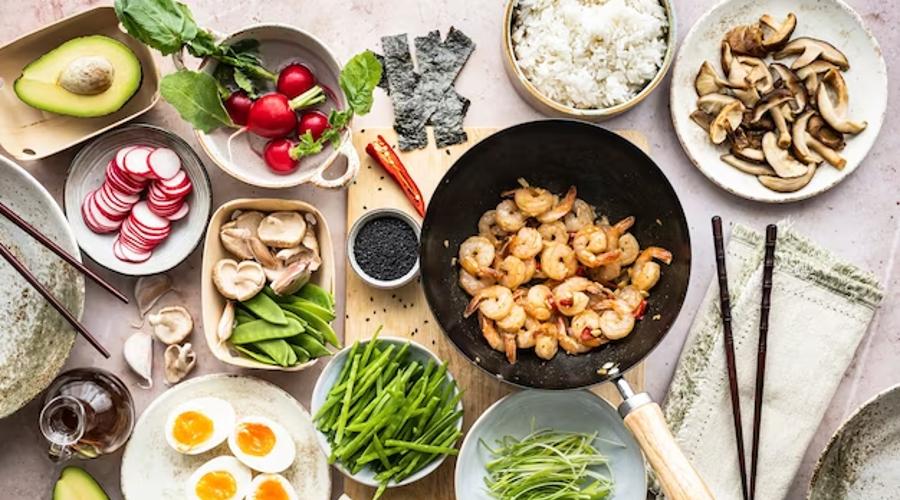Are you looking to adopt a flexible and sustainable approach to your eating habits? The flexitarian diet might be just what you need. In this blog post, we will delve into the world of flexitarianism and provide you with a comprehensive meal plan to kickstart your journey.
Whether you’re a seasoned flexitarian or new to the concept, we will guide you through the principles, benefits, and delicious recipes that make the flexitarian diet a popular choice. Get ready to explore the exciting world of plant-based nutrition, reduced animal product consumption, and the freedom to customize your meals. Are you ready to embrace a flexible and nourishing way of eating? Let’s dive in!
Benefits of the Flexitarian Diet
Following a flexitarian diet can offer a wide range of benefits for both your health and the environment. By incorporating more plant-based foods into your meals while still allowing for occasional consumption of animal products, you can enjoy a balanced and sustainable approach to eating. Let’s explore the key benefits of the flexitarian diet in more detail.
Plant-Based Nutrition for Optimal Health
Embracing a flexitarian diet means prioritizing plant-based nutrition for optimal health. By consuming a variety of fruits, vegetables, whole grains, legumes, and nuts, you provide your body with essential vitamins, minerals, and antioxidants.
These nutrients help support overall well-being, boost the immune system, and reduce the risk of chronic diseases. Incorporating plant-based proteins like tofu, tempeh, and beans ensures an adequate intake of protein while avoiding excessive reliance on animal products.
Plant-based proteins: tofu, tempeh, lentils, chickpeas, black beans
Nutrient-rich vegetables: kale, spinach, broccoli, bell peppers
Whole grains: quinoa, brown rice, whole wheat bread
Healthy fats: avocado, olive oil, nuts, seeds
Reduced Environmental Impact
One of the significant advantages of the flexitarian diet is its reduced environmental impact compared to diets heavily reliant on animal products. The production of animal-based foods requires more resources, including land, water, and feed, contributing to deforestation, water scarcity, and greenhouse gas emissions. By incorporating more plant-based meals, you can help conserve natural resources and lower your carbon footprint.
- Emphasis on locally sourced and seasonal produce
- Reduction in meat consumption, especially red meat and processed meats
- Sustainable food choices that support biodiversity and conservation efforts
Increased Dietary Flexibility
Flexibility is at the core of the flexitarian diet, allowing you to customize your meal plan according to your dietary preferences and needs. The flexibility of this approach makes it more sustainable in the long term, as it offers room for personalization and adaptation. Whether you’re transitioning from a traditional diet or already following a plant-based lifestyle, the flexitarian approach provides a flexible framework that can be adjusted to suit various dietary goals.
- Option to include occasional animal products for those who desire it
- Gradual transition to plant-based meals to ensure long-term adherence
- Freedom to explore new flavors, cuisines, and cooking techniques
In conclusion, the flexitarian diet meal plan offers numerous benefits, including improved health through plant-based nutrition, reduced environmental impact, and increased dietary flexibility. By embracing this approach, you can enjoy a well-balanced and sustainable way of eating that supports both your personal well-being and the planet.
Designing a Balanced Flexitarian Meal Plan
Designing a well-balanced flexitarian meal plan is essential for ensuring optimal nutrition and enjoyment of meals. Let’s explore the key aspects of designing a balanced flexitarian meal plan in more detail:
Building Blocks of a Flexitarian Meal
To create a balanced flexitarian meal, it’s important to include the key building blocks that provide essential nutrients and flavors.
These building blocks include:
- Plant-based proteins: Incorporate a variety of plant-based protein sources, such as legumes, tofu, tempeh, and seitan. These protein-rich foods offer a wide range of amino acids and are essential for muscle repair and growth.
- Abundant vegetables and fruits: Fill your plate with a colorful array of vegetables and fruits. They provide a wide range of vitamins, minerals, and antioxidants that support overall health and well-being.
- Whole grains: Include whole grains like quinoa, brown rice, whole wheat bread, and oats to provide fiber, energy, and essential nutrients. These grains are more nutritious and less processed than refined grains.
- Healthy fats: Incorporate healthy fats from sources like avocado, nuts, seeds, and olive oil. These fats provide essential fatty acids and contribute to satiety and flavor in meals.
- Flavorful herbs and spices: Enhance the taste and nutritional profile of your meals by using herbs and spices. They add depth, aroma, and health-promoting properties to your dishes.
Portion Control and Balanced Macros
Portion control and balanced macros are important considerations when designing a flexitarian meal plan. Here are some tips to keep in mind.
Pay attention to portion sizes: Be mindful of portion sizes to avoid overeating. Use visual cues, such as using your hand as a guide for protein and grain portions, to help you estimate appropriate amounts.
Balance your macronutrients: Ensure your meals contain a balance of carbohydrates, proteins, and fats. This balance helps provide sustained energy and supports overall nutrition. Aim for a plate that is approximately half filled with vegetables, one-quarter with protein, and one-quarter with whole grains or starchy vegetables.
Listen to your body: Practice intuitive eating and tune in to your body’s hunger and fullness cues. This can help you eat according to your body’s needs and avoid unnecessary overeating.
Weekly Meal Planning and Preparation
Weekly meal planning and preparation can be incredibly helpful when following a flexitarian diet. Here are some tips to make meal planning and preparation more efficient.
Plan your meals in advance: Take some time each week to plan your meals and create a grocery list. This helps ensure you have all the necessary ingredients and reduces the need for last-minute, unhealthy food choices.
Prep ingredients ahead of time: Spend some time prepping ingredients, such as washing and chopping vegetables, cooking grains and legumes, and marinating proteins. This can save you time during the week and make meal preparation more convenient.
Batch cook and freeze: Consider batch cooking meals and freezing individual portions. This allows you to have ready-made meals on hand for busy days or when you need a quick and healthy option.
Use versatile ingredients: Choose ingredients that can be used in multiple recipes throughout the week. This helps reduce food waste and simplifies meal planning.
Incorporate leftovers creatively: Get creative with leftovers by repurposing them into new meals. For example, leftover roasted vegetables can be added to salads or turned into a hearty soup.
Breakfast Ideas for a Flexitarian Meal Plan
Breakfast is an important meal that sets the tone for the rest of the day, and incorporating nutritious and delicious options into your flexitarian meal plan is key. Here are some breakfast ideas that align with a flexitarian approach.
Power-Packed Smoothie Bowls
Smoothie bowls are a popular and versatile breakfast option that can be packed with nutrients and flavors. They typically consist of a thick smoothie base topped with various toppings for added texture and nutrition.
Here are some nutritious ingredients to include in your power-packed smoothie bowls:
- Leafy greens: Add a handful of spinach or kale to your smoothie base for an extra boost of vitamins, minerals, and fiber.
- Plant-based protein: Incorporate protein sources like silken tofu, Greek yogurt, or plant-based protein powders to support muscle recovery and keep you feeling satisfied.
- Healthy fats: Include sources of healthy fats, such as nut butter, avocado, or chia seeds, to provide satiety and add richness to your smoothie bowl.
- Toppings: Add a variety of toppings like fresh fruits, nuts, seeds, granola, or coconut flakes for additional nutrients, crunch, and flavor.
Try different flavor combinations like a green smoothie bowl with spinach, banana, almond milk, and a sprinkle of granola, or a tropical smoothie bowl with mango, pineapple, coconut milk, and toasted coconut flakes.
Veggie-Packed Frittatas
Frittatas are a versatile and easy-to-make breakfast option that allows you to incorporate a variety of vegetables into your meal. They can be prepared ahead of time and enjoyed throughout the week.
Here’s how you can create a veggie-packed frittata:
- Choose your vegetables: Select a combination of colorful vegetables such as bell peppers, zucchini, mushrooms, spinach, and cherry tomatoes. These veggies provide fiber, vitamins, minerals, and antioxidants.
- Saute and season: Saute the vegetables in a skillet with a small amount of olive oil or vegetable broth until they are tender. Season with herbs and spices like garlic, basil, thyme, or smoked paprika to enhance the flavors.
- Add eggs or egg substitute: Whisk together eggs or an egg substitute with a splash of milk or plant-based milk. Pour the egg mixture over the sauteed vegetables in the skillet.
- Bake and serve: Transfer the skillet to the oven and bake until the frittata is set and lightly golden. Allow it to cool slightly before slicing into wedges and serving.
Serve the frittata with a side of whole grain toast or a mixed greens salad for a balanced and satisfying breakfast.
Overnight Chia Puddings
Overnight chia puddings are a convenient and nutritious breakfast option that can be prepared the night before. Chia seeds are rich in fiber, omega-3 fatty acids, and protein, making them an excellent addition to a flexitarian meal plan.
Here’s how to make overnight chia puddings:
- Mix the ingredients: In a jar or container, combine chia seeds with your choice of milk (dairy or plant-based), sweetener like maple syrup or honey, and flavorings such as vanilla extract or cocoa powder. Stir well to combine.
- Let it set: Place the jar in the refrigerator and allow the chia seeds to absorb the liquid overnight. The seeds will swell and create a creamy pudding-like texture.
- Customize with toppings: In the morning, give the chia pudding a stir and add your favorite toppings. Fresh fruits, nuts, seeds, and a sprinkle of cinnamon or shredded coconut are great options
Lunch and Dinner Recipes for a Flexitarian Meal Plan
When it comes to lunch and dinner, having a variety of delicious and nutritious recipes is essential to maintain a balanced flexitarian meal plan. Here are some ideas for satisfying lunch and dinner options.
Hearty Grain Bowls
Grain bowls are a versatile and filling option for lunch or dinner. They typically consist of a base of whole grains, a variety of vegetables, a protein source, and a flavorful sauce or dressing. Here are some components you can include in your hearty grain bowls.
Whole grains: Choose from options like quinoa, brown rice, farro, or bulgur wheat. These grains provide fiber, complex carbohydrates, and essential nutrients.
Protein sources: Include plant-based proteins like chickpeas, black beans, lentils, or tofu. You can also add grilled chicken or salmon if you include animal products in your flexitarian diet.
Abundant vegetables: Fill your grain bowl with a colorful assortment of roasted or sautéed vegetables such as broccoli, bell peppers, sweet potatoes, and kale.
Flavorful dressings or sauces: Enhance the taste of your grain bowl with a homemade vinaigrette, tahini sauce, or a light soy-based dressing.
Customize your grain bowl by mixing and matching these components based on your preferences.
Here’s an example of a hearty grain bowl:
- Base: Cooked quinoa
- Protein: Roasted chickpeas
- Vegetables: Roasted Brussels sprouts, sautéed kale, and roasted sweet potatoes
- Toppings: Sliced avocado, toasted pumpkin seeds, and a drizzle of lemon-tahini dressing
Veggie Stir-Fries and Curries
Veggie stir-fries and curries are flavorful and nutritious options that can be customized with a variety of vegetables and spices. They are quick to prepare and can be easily adapted to include your favorite ingredients. Here are some tips for creating veggie-packed stir-fries and currie.:
Vegetable variety: Choose a mix of vegetables like bell peppers, broccoli, carrots, snow peas, mushrooms, and zucchini. This adds color, texture, and a wide range of vitamins and minerals.
Flavorful sauces and spices: Create a homemade sauce using ingredients like soy sauce, ginger, garlic, chili paste, or curry powder. These add depth and complexity to the dish.
Protein options: Include tofu, tempeh, edamame, or seitan as plant-based protein sources. You can also add lean animal proteins like chicken or shrimp if desired.
Serve with whole grains: Accompany your stir-fries or curries with brown rice, quinoa, or whole wheat noodles to add fiber and nutrients.
Here’s an example of a veggie stir-fry:
- Vegetables: Sliced bell peppers, broccoli florets, snap peas, and mushrooms
- Protein: Cubed tofu or edamame
- Sauce: A combination of soy sauce, garlic, ginger, and a pinch of chili flakes
- Serve over: Brown rice or whole wheat noodles
Plant-Based Burgers and Tacos
Plant-based burgers and tacos offer a satisfying and flavorful alternative to traditional meat-based versions. They are a great way to incorporate more plant-based protein and a variety of vegetables into your flexitarian meal plan. Here’s how you can create delicious plant-based burgers and tacos.
Protein-rich patty or filling: Use ingredients like black beans, lentils, quinoa, chickpeas, or a combination of these to form the base of your burger patty or filling for tacos.
Flavorful seasonings and spices: Add a combination of herbs and spices to enhance the taste of your plant-based burgers or taco filling. Options include paprika, cumin, garlic powder, onion powder, and chili powder.
Toppings and condiments: Customize your burgers or tacos with an array of toppings and condiments. Consider options like sliced avocado, lettuce, tomatoes, red onions, pickles, vegan cheese, salsa, or a tangy yogurt-based sauce.
Bun or tortilla options: Choose whole grain buns or whole wheat tortillas to increase the fiber content and add nutrients to your plant-based burgers or tacos.
Plant-Based Burger example:
- Patty: Black bean and quinoa patty seasoned with cumin, paprika, garlic powder, and onion powder.
- Toppings: Sliced avocado, lettuce, tomato, and red onion.
- Condiments: Chipotle mayo or a tangy yogurt-based sauce.
- Serve with: Whole grain bun or lettuce wrap.
Plant-Based Tacos example:
- Filling: Lentil and vegetable mixture seasoned with chili powder, cumin, and garlic.
- Toppings: Sliced avocado, shredded lettuce, diced tomatoes, and red onion.
- Condiments: Salsa, vegan sour cream, or a squeeze of lime.
- Serve in: Whole wheat tortillas or lettuce cups.
By incorporating these lunch and dinner recipes into your flexitarian meal plan, you can enjoy a variety of delicious and nutrient-dense options that align with your dietary preferences and goals. Remember to customize the recipes based on your taste preferences and experiment with different ingredients to keep your meals exciting and satisfying.
Snacks and Desserts to Enjoy on a Flexitarian Meal Plan
When following a flexitarian meal plan, it’s important to have satisfying and nutritious snacks and desserts that align with your dietary choices. These options are not only delicious but also offer a good balance of macronutrients and flavors to keep you energized throughout the day.
Nut and Seed Energy Bites
Nut and Seed Energy Bites: These bite-sized treats are a perfect on-the-go snack. Packed with a combination of nuts, seeds, dried fruits, and natural sweeteners, they provide a boost of energy and essential nutrients. You can easily customize the ingredients based on your preferences and dietary needs.
Here are some popular variations:
- Almond and Date Energy Bites: Made with almonds, dates, almond butter, and a sprinkle of cinnamon.
- Peanut Butter and Chia Seed Bites: Combining peanut butter, chia seeds, oats, and a touch of honey.
- Cashew and Coconut Bites: A tropical twist with cashews, shredded coconut, dried pineapple, and a drizzle of agave syrup.
Roasted Chickpea Snacks
Roasted Chickpea Snacks: Chickpeas are a versatile legume that can be transformed into a crunchy and flavorful snack. By roasting them with spices and seasonings, you can create a satisfying alternative to traditional snacks.
Here’s a simple recipe to try:
- Preheat the oven to 400°F (200°C) and rinse and drain a can of chickpeas.
- Pat the chickpeas dry and toss them with olive oil, salt, and spices like cumin, paprika, or garlic powder.
- Spread the chickpeas in a single layer on a baking sheet and bake for about 30-40 minutes until crispy.
- Enjoy them as a standalone snack or sprinkle them over salads for an extra crunch.
Fruit Parfaits and Yogurt Dips
Fruit Parfaits and Yogurt Dips: For a refreshing and lighter dessert option, fruit parfaits and yogurt dips are excellent choices.
Here are two ideas to consider:
- Fruit Parfait: Layer Greek yogurt with your favorite fruits, such as berries, sliced peaches, or mango chunks. Top it off with a sprinkle of granola, chopped nuts, or a drizzle of honey for added texture and flavor.
- Yogurt Dip: Mix Greek yogurt with a touch of honey or maple syrup, along with flavors like vanilla extract or cinnamon. Serve the dip with an assortment of fruit slices, such as apple, banana, and strawberries, or with whole grain crackers for a crunchy twist.
These snacks and desserts provide a variety of textures, flavors, and nutrients to enhance your flexitarian meal plan. They are easy to prepare, customizable to your taste preferences, and offer a delightful balance of health and indulgence. Remember to enjoy them in moderation as part of a well-rounded diet.
Tips for Success and Long-Term Adherence
Transitioning to a flexitarian meal plan can be an exciting journey towards a more plant-focused and sustainable way of eating. To ensure long-term adherence and success, it’s important to approach the diet with a mindful and flexible mindset. Here are some tips to help you navigate the transition and maintain a balanced and enjoyable flexitarian lifestyle.
Gradual Transitioning and Flexibility
Gradual Transitioning and Flexibility: Instead of making sudden and drastic changes, consider gradually incorporating more plant-based meals into your diet while still allowing flexibility with the inclusion of animal products. This approach can help you adjust to the new eating pattern and make it more sustainable in the long run.
Here are a few strategies to try:
- Start with one or two meatless days per week and gradually increase as you become more comfortable.
- Experiment with different plant-based proteins, such as legumes, tofu, tempeh, and seitan, to find your preferred alternatives.
- Allow occasional flexibility by choosing high-quality, ethically sourced animal products when desired or when dining out.
Mindful Eating and Portion Awareness
Mindful Eating and Portion Awareness: Practicing mindful eating can enhance your overall enjoyment and satisfaction with meals. Focus on tuning into your body’s hunger and fullness cues, and be aware of portion sizes.
Here are some tips to incorporate mindful eating into your flexitarian meal plan:
- Eat slowly and savor each bite, paying attention to the taste, texture, and aroma of your food.
- Use smaller plates and bowls to help control portion sizes and prevent overeating.
- Fill half of your plate with a colorful variety of fruits and vegetables, one-quarter with whole grains, and one-quarter with plant-based proteins.
Exploring New Flavors and Recipes
Exploring New Flavors and Recipes: One of the exciting aspects of a flexitarian diet is the opportunity to explore a wide range of plant-based flavors and recipes. Embrace the variety and creativity that comes with incorporating more plant-based ingredients into your meals.
Here are a few ways to expand your culinary horizons:
- Experiment with different herbs, spices, and seasonings to add depth and flavor to your dishes.
- Explore diverse cuisines that naturally incorporate plant-based foods, such as Mediterranean, Asian, or Middle Eastern.
- Seek inspiration from cookbooks, online recipe sources, and social media platforms for delicious and innovative plant-based recipes.
By adopting a gradual and flexible approach, practicing mindful eating, and exploring new flavors and recipes, you can find success and long-term adherence to a flexitarian meal plan. Remember that everyone’s journey is unique, so listen to your body, enjoy the process, and make choices that align with your personal preferences and health goals.
FAQ:
Is the flexitarian diet suitable for weight loss?
Yes, the flexitarian diet can be effective for weight loss due to its emphasis on whole, plant-based foods that are generally lower in calories and higher in fiber. By incorporating more fruits, vegetables, legumes, and whole grains into your meals, you can feel satisfied while consuming fewer calories. However, it’s important to pay attention to portion sizes and overall calorie intake to achieve weight loss goals.
Can I get enough protein on a flexitarian meal plan?
Absolutely! The flexitarian diet allows for the inclusion of animal products in moderation, which can contribute to protein intake. Additionally, plant-based protein sources such as legumes, tofu, tempeh, seitan, quinoa, and nuts and seeds are excellent alternatives. By combining different plant-based protein sources throughout the day and ensuring adequate portion sizes, you can easily meet your protein needs.
How can I ensure I’m getting enough nutrients on a flexitarian diet?
To ensure you’re getting a wide range of nutrients, focus on incorporating a variety of plant-based foods into your meals. Aim to include a colorful assortment of fruits and vegetables, whole grains, legumes, nuts, and seeds. Consider consulting with a registered dietitian or nutritionist who can help create a balanced meal plan tailored to your specific nutritional needs.
Can I still enjoy my favorite non-plant-based foods on a flexitarian meal plan?
Yes! The flexibility of the flexitarian diet allows for occasional inclusion of non-plant-based foods. You can still enjoy your favorite animal-based products in moderation, making mindful and conscious choices. It’s about finding a balance that works for you and aligns with your health goals and values.
How do I plan my meals on a flexitarian diet?
Meal planning is key to success on a flexitarian diet. Start by outlining your weekly meals, incorporating a variety of plant-based ingredients and including some animal products if desired. Prepare a shopping list based on your meal plan and stock up on nutritious ingredients. Consider batch cooking and meal prepping to save time during the week and ensure you have healthy meals readily available.







